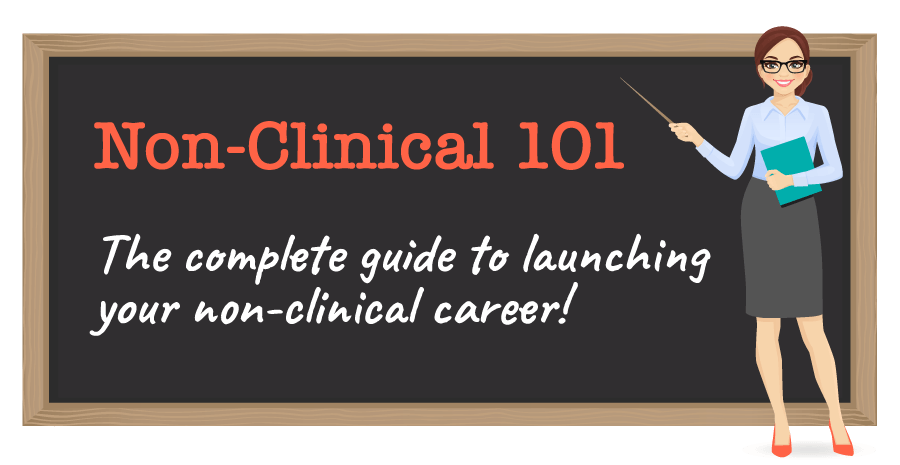If you’re looking for a physical therapy side hustle this year, you’re not alone. A PT, OT, or SLP side hustle can help you diversify your skill set, advance your career, and make some money to help pay off loans!
We realize that each person reading this article will have different needs.
- Maybe you want an OT side hustle to help you pay off student debt.
- Perhaps you’re here because you’re a PTA wanting to fund additional education.
- Maybe you want a side gig to serve as a bridge to your non-clinical SLP career.
- Who knows…you could want NOTHING to do with healthcare when you’re not on the clock!
Whatever your reason for pursuing a side gig, you’re in the right place! We created this article to help you determine the best type of side hustle for you as you create your career goals for the year ahead. Each option has pros and cons, but we’re sure you’ll find a good option for whatever fits your needs!
We’ll cover some side gigs that leverage your existing background, and we’ll also list some opportunities to make cash that have nothing to do with therapy! 🙂
Table of contents
This post may contain affiliate links or codes. This won’t increase your cost, but it helps keep TNCPT alive, and free of annoying ads! Thank you for your support. 🙂
8 PT/OT/SLP side hustles that use your existing experience
Let’s start with 8 different side hustles that can use your existing experience and education. After this section, we’ll move on to options outside of healthcare altogether.
1. Digital entrepreneurship (blogging/online business)

Digital entrepreneurship can be a great side hustle for PT, OT, and SLP professionals alike. And, if you play your cards right, it can easily evolve to become your main job!
This type of work—which is often called blogging, online entrepreneurship, or simply being a “creator”— can be crafted around your lifestyle. This makes it very appealing for new parents and those looking to work for themselves in the long run.
An online business can be monetized in all sorts of ways. You can create online courses, sell products, become a coach or mentor within a niche, promote others’ goods/services as an affiliate, offer CEUs, or even consult within an area of expertise.
Pros:
- Passive income. Once you hit a certain point, your income is largely passive. There is no feeling quite like being at dinner or at a party, and getting a notification that you just made money!
- Fulfillment. Running a business can give you a sense of purpose and agency. When people improve their lives as a result of your work, you’ll feel like a million bucks.
- Working from home. Working remotely as a PT/OT/SLP professional often feels unrealistic. But running a therapy blog or online business is one of the few ways that you can work from home and make some money using your existing background!
- Integrity. One of the biggest perks of working for yourself is the fact that you only have to work with people you respect. You don’t have to be an affiliate for someone shady. You can create a business that reflects your own morals and values.
Cons:
- Requires patience. You will likely put in some time before you make a profit from a therapy blog.
- People don’t always “get it.” There will always be people who think you’re running an MLM or pyramid scheme. Even your own parents might not understand what, exactly, you do for a living. It’s normal, and you learn to live with the haters 🙂
- You’ll need more skills. You need to learn how to run a website and use sophisticated marketing techniques and tools. Learning these skills can be a fun challenge for most therapists.
2. Writing

Are you good at writing? Do you immediately spot grammatical errors when you’re reading? Maybe you’ve perused a boring brochure in a medical office and thought, “I could be a clinical writer!”
Perhaps it’s time to take the next step!
Working as a freelance writer can be satisfying, laid-back, and lucrative. If you love writing and you’re good at it—meaning you’re fast, adaptable, and produce high-quality work—you can make substantial side income as a writer.
Like digital entrepreneurship, you won’t make money from day one. It will take you some time to put together a writing portfolio (which usually requires doing some free or low-paid guest posts on other people’s websites). It will also take some time to get clients. However, once you do land clients and do a stellar job with them, word will get out. As long as you perform well, you’ll gain loyal clients while commanding higher pay over time.
Pros:
- Work from home. Working from home is magical. Doing so on your own schedule is even better. Writing almost never requires you to be onsite, so this is a great PT/OT/SLP side gig you can do from home.
- Assistants allowed. Many OTAs and PTAs have become successful clinical writers!
- Flexible hours. When you’re a freelance writer, your clients don’t care when you work, as long as you meet your deadlines.
- Can be a stepping stone to other options. If you’re a good writer, doors start to open. Whether you build your online business, lean into content strategy, or decide that working as a full-time clinical editor makes sense (and those are just a few options), you’ll have plenty of opportunities to move into other non-clinical roles.
Cons:
- Initial pay. While you can eventually hit the point of demanding high hourly writing rates, you’ll likely start with a lot of assignments for low (or even no) pay. It’s part of the process, and it can take awhile to get established enough to command high rates. But, once you can, the rates really are great!
- Clients sometimes come and go. It’s frustrating when you start getting used to a nice steady client, and then they no longer need you. That’s the name of the game as a freelance writer, though! It’s like being a PRN therapist, but in the content world.
- Competitive. Other people have started to figure out how awesome it is to be a writer, so there are plenty of folks out there doing it—so, you’ll need to stand out to make a real career of freelance writing. Pro tip: try looking for a physical therapy startup that needs content writers.
>> Check out our article about how to become a health content writer!
Learn how to land a writing job—and explore 26 additional career paths—in Non-Clinical 101!
3. Consulting

Consulting is a fantastic side hustle for the therapist or assistant with a specific skill set. For example, if you have extensive experience with gait training a post-CVA population, you might be able to consult with a rehab tech company or startup creating ambulation robotic devices for stroke patients.
Or, if you’ve done a lot of complex rehab compliance work during your career, you might be hired by other companies to do the same for them.
Pros:
- High hourly pay. Consultants typically make a nice hourly rate, as they’re hired for their highly specialized skills and experience. Companies will pay for the right fit in the right role. Non-Clinical 101 has resources to help you find your niche, identify clients, and set your rates to ensure you are compensated appropriately.
- Exciting work. Consulting roles are often a really nice change from the churn-and-burn nature of mill clinics and SNFs. And, with the gig economy in full swing, more and more companies are hiring consultants instead of using benefited employees.
- Can lead to full-time non-clinical work. Consultants are often recruited into companies to become full-time employees (assuming they’re doing a good job as consultants).
Cons:
- Finding clients can be tough. Unless you have an existing niche or connection, finding your initial clients can be tough. A good website can help, as can very specialized experience with rehab tech, certain patient populations, etc. Non-Clinical 101 makes recommendations to help ease your transition into consulting work.
- State laws. Certain states have strange rules around working as a 1099 employee, so be sure to look into your own state’s regulations on consulting and contracting before you make any big moves.
Learn how to land a consulting side job—and explore 26 additional career paths—in Non-Clinical 101!
4. Cash-based practice

A cash-based practice is a great side hustle for PTs who love treating, but also enjoy marketing (and, preferably, have some business acumen). If you have a specialized skill set or live in a locale with relatively well-off clients, you can really make good money this way.
The key to running a cash-based practice is to feel confident in your skills and recognize that patients can tell if you don’t really believe in your abilities. If you feel like a mediocre therapist, that’s OK! You might find that a different PT side hustle is a better fit for your needs. But if you truly believe you simply need to leave the confines of our broken healthcare system to get the results you want in your patients, cash-based practice might be for you!
Pros:
- You’re using your skills and education. Incidentally, cash-based PT is a great side hustle for occupational, speech, and physical therapists who take full-time non-clinical jobs! It’s a way to keep treating and keep your skills fresh, without working in those burnout-inducing full-time jobs.
- Can be lucrative. Cash-based OT, PT, and SLP practices can be super lucrative because you’re not beholden to insurance reimbursements and you don’t have to spend all that time on documentation.
- Avoiding insurance. If your only real beef with patient care is treating to insurance companies’ irrational whims, cash-based PT can be a great option for you!
Cons:
- You’ll work a LOT. The sad fact for most cash-based practices is that you’ll work a lot more than you think. Plenty of people sell the idea of cash therapy as a panacea for more time, freedom, and money, but you’ll most likely spend lots of long, unpaid hours coming up with marketing strategies and balancing the books. After all, clinical documentation is time-consuming, but there’s much more that goes into running a practice than evals and notes!
- It’s still patient care. If you’re on this site, chances are that you don’t want to treat patients anymore. You’re probably more interested in leaving patient care altogether. If you’re burned out because you simply don’t like patient care, switching to a new payment model probably won’t solve things. Plus, just like regular clinical roles, if you’re an assistant, you might find ownership limiting on some levels.
- It can cost more upfront than you’d like. From independent malpractice coverage to website maintenance fees, the costs of running a cash practice can be prohibitive for someone simply looking for a small PT/OT/SLP side hustle.
5. Telehealth

If you’re looking for a side hustle that pays well from day one and doesn’t require you to learn a ton of new skills right away, don’t sleep on telehealth!
While it can be competitive to land a full-time teletherapy job, PRN and part-time telehealth roles are much easier to find. Plus, these positions can often lead to full-time non-clinical work down the road.
Pros:
- You’re using your skills and education. Telehealth is nearly the same as in-person care for certain patient populations. If you’re able to get good outcomes with your patients without relying on manual techniques, you might love a PRN teletherapy role to make some extra cash.
- Can be flexible. Just like in-person companies, many telehealth companies like having PRN telehealth clinicians on staff to work on weekends, handle patient overflow, and cover therapist absences. If you love the idea of filling therapy gaps in from time to time—but you don’t want to have to leave your house to do so—telehealth can be a great option for your side gig.
- Working from home. If you like treating patients but simply crave working from home when you do your side gig work, telehealth can help you make more money without having to leave the house!
Cons:
- You might not get much work. Just like regular PRN work, it can be feast or famine. You might find you get calls to work when you aren’t able to take the hours, and you might want hours during the times when there isn’t any work to be found.
- Can be challenging. Telehealth sounds great on paper, but it can be very frustrating when technology breaks mid-session, or when there’s a language barrier you didn’t expect, or when you’re unable to get the information you need from your patients in a virtual setting.
Learn how to land a telehealth side gig—and explore 26 additional career paths—in Non-Clinical 101!
6. Instructor/Educator

Education can be a fabulous PT, OT, or SLP side gig for the right person!
People often assume that an education job means a stiff, formal, full-time job at a nearby PT, OT, or SLP school, but there are so many ways to teach without the commitment of full-time work. Whether you dream of teaching tomorrow’s esteemed doctoral-level clinicians or you like the idea of creating continuing education courses, you have options. You can even opt to tutor or teach at the community college level.
The key is understanding what you want out of a side gig and picking the type of work that fits those needs.
Pros:
- Fulfilling. Education, in any form, can feel extremely fulfilling and satisfying. The work itself can be very flexible for specific roles, too.
- Respectable pay. You might not make lottery-winning pay in these roles, but you can make enough to really put a dent in your expenses.
- Prestige. There’s a certain degree of prestige that comes from being in academia, and this might appeal to you!
Cons:
- Non-billable hours. While the pay for your actual work is typically substantial, these roles often come with non-billable time to consider. This time can decrease your pay substantially. For example, commuting to/from the nearby university might not be worth it if you’re on the road for 45 minutes each direction for a 2-hour lecture.
- Options are limited for assistants. You can still find work in education when you’re an assistant, but it is much harder to do. Your best bet will likely be in the continuing education space if you have a niche like vestibular or women’s health. If you have a master’s degree, you can teach at the PTA/OTA/SLPA level.
- Political. Academia can feel extremely political compared to normal clinical work.
Learn how to land a side gig in education—and explore 26 additional career paths—in Non-Clinical 101!
7. Rehab Liaison

Rehab liaison is one of the most appealing non-clinical career paths. In fact, PTs, OTs, SLPs, and assistants alike have found happiness in this type of work. Rehab liaisons (sometimes called clinical liaisons) work for inpatient rehab facilities (IRFs). Their role is to get appropriate patients into beds, filling the census with people who will have good outcomes from their stays in the ARU (acute rehabilitation facility).
The best part is that you can often work PRN or part-time as a rehab liaison!
Pros:
- Easier on your body than patient care. Rehab liaisons have plenty of interaction with patients/families, as well as chances to collaborate on an interdisciplinary team. But the work doesn’t involve nearly as much physical demand as normal clinical work.
- Comparable pay. Most rehab liaison roles have pay that is on par with, or higher than, clinical work.
- Stimulating with tons of variety. These positions often have you doing wildly different tasks throughout the day. The roles are rarely boring.
Cons:
- Can be confusing when you’re PRN. There are lots of moving parts in this type of work. A full-time liaison is typically going to have an easier time keeping track of things than a PRN. It can be tough to feel like you’re fully caught up on all the cases when you’re only there some days.
- Require adaptability and local travel. These roles often involve local travel to facilities for marketing, patient interviews, and networking purposes. If you don’t like driving and being adaptable to a day’s changing needs, you won’t enjoy the work.
- Can have productivity quotas. While a rehab liaison side hustle won’t be as stressful as a full-time job, liaison roles can sometimes become tough when too much focus is put on filling the census quota.
Learn how to land a PRN job as a rehab liaison—and explore 26 additional career paths—in Non-Clinical 101!
8. PPS Coordinator

A Prospective Payment System (PPS) Coordinator manages and coordinates patient care from a financial perspective, particularly in the context of Medicare’s PPS for inpatient rehabilitation facilities (IRFs). PPS coordinators might be involved with anything from compliance to data management, and from care coordination to billing and reimbursement tasks.
These positions are often full-time, but you’ll sometimes find facilities looking for PRN or part-time PPS coordinators. This type of work is great for those with a background in inpatient rehab, as well as anyone familiar with behind-the-scenes rehab work like compliance and billing.
Pros:
- Comparable pay to clinical work. These jobs usually pay what clinicians make, and the pace tends to be more laid back!
- Very little upskilling needed. Most of the training for PPS coordinators will be done on the job!
- No travel required. While you do usually need to be onsite for this type of work, you don’t need to do any travel beyond getting to work.
Cons:
- Can be tough to find work. These jobs don’t come up too often. These tend to be pleasant and predictable jobs without too much stress—so clinicians who find them often keep them!
- Options are limited for assistants. You can still find work in this field when you’re an assistant, but roles generally go to therapists or nurses.
Learn how to find work in compliance (like PPS coordinator jobs)—and explore 26 additional career paths—in Non-Clinical 101!
6 side hustles beyond healthcare altogether
Maybe you don’t want anything to do with healthcare in your free time. That is SO fair, and it’s entirely relatable.
Here are some options for side hustles that are completely outside the realm of healthcare. These may or may not work for you or be enjoyable. Pick something that aligns with your goals and have fun!
1. Petsitting (or other types of caregiving)

There’s a reason why so many people prefer cats and dogs (and other pets) to humans! You might feel emotionally drained and exhausted after long days of taking care of patients, but caring for animals might feel like a welcome respite from the grind.
There are all sorts of ways to make pet care part of your side hustle dreams. From signing up for existing dog-walking or petsitting platforms, to starting your own business, you have a ton of options to work as little or as much as you’d like on this side hustle.
Here are some common platforms to consider if you’d like to walk dogs or take care of people’s pets while they travel.
Here are some popular petsitting platforms.
Keep in mind that overnight petsitting gigs often pay more than daytime jobs. Perhaps you can’t have your own pet because your apartment won’t allow it, or maybe you have a partner who is allergic to pets. Whatever your reason, if you enjoy sharing a bed with pets or are skilled with giving medications, you can command top dollar as an overnight petsitter!
“What if I only like cats?”
Check out Meowtel to ensure you’re paid exclusively to pet those purring puddytats!
“What if I’m not into pets?”
Keep in mind that, even if you’re not an animal person, there are other ways to provide care outside your work hours. You could babysit (and your clinical background is a huge asset to babies and kids with medical needs), or you could provide in-home caregiving services to seniors or those with disabilities.
Be sure to explore sites like Care and Naborforce, especially if you like working with children or seniors!
Pros:
- Pets! If you’re an animal person, being paid to hang out with other people’s cats and dogs can be a dream come true!
- Flexibility. In most cases, you can do the work on your own time, including mornings and evenings before and after work. Unless a pet needs a strict medication regimen, you can typically set your own hours.
Cons:
- More responsibility. If you feel depleted from being “on” for patients, having more “on” time to care for needy pets might not be a good fit.
- Unpaid travel time. Some petsitting gigs won’t be super close to your home or your workplace. It’s important to factor in unpaid time, as well as travel costs to/from the sitting gig.
2. Social media/marketing/website specialist

There are plenty of full-time social media and website management jobs out there, but you can also find gigs that only require a few hours here or there…especially if you’re willing to think outside the box!
Here are some ideas:
- Managing a few accounts for an influencer. Think of some therapy influencers you know. Would any of them benefit from you managing their social media?
- Managing the website and/or newsletter for a concierge clinic. If you have the skills AND the background, you’ll be a more appealing candidate than someone without a rehab education.
If you take the time to upskill and learn from sites like Udemy or Coursera, you can develop a niche skillset you can use to build a thriving side hustle in the marketing and social media space!
Pros:
- Consistent work. Unlike some side-hustles, social media, marketing, and website work tends to be more consistent and ongoing, which usually means more money in your pocket.
- Work from home. After being “on” at the clinic or hospital all day, having a relaxing job you can do from home can be a welcome change!
Cons:
- Steeper learning curve than other side gigs. You will typically need to upskill to land these jobs, unless you already happen to know how to update websites or manage business social media accounts.
- Can be tough to find the first few roles. If you don’t have experience managing social media or websites, you might struggle a bit to find a few clients to take a chance on you. Luckily, sites like Upwork make the process easier. That said, networking is ALWAYS your best bet!
3. Online marketplace work

If you’ve honed specialized skills that a lot of people lack, you might want to market them to an online marketplace website! For example, if you’re great at assembling IKEA furniture or you, for some strange reason, enjoy moving furniture, you can sign up to pick up these one-off tasks from these times of websites!
Here are some popular online marketplaces:
Pros:
- No long-term commitment. Online marketplaces are great for picking up one-off jobs to make a little cash on the fly. You don’t have to worry about an ongoing job that might lead to burnout or lack of flexibility in your life.
- You can pick assignments that fit your skills. Many gigs can be offered remotely! Web design, writing assistance, video animation, just to name a few.
- Flexible. You can select tasks from a wide range of timelines and deadlines, so you’ll be able to fit your tasks around your normal work hours.
Cons:
- Safety considerations. If you’re uncomfortable going into strangers’ homes to do assignments, you probably won’t like this type of work.
- Can be physically demanding. Patient care can be taxing on the mind and the body, so the last thing you might want to do after work is help someone move or put together furniture.
4. Clinical trials

Clinical research often needs volunteer participants to test the efficacy of medical interventions. Depending on your needs and overall comfort level with the experience, this type of work might be the right fit. Or it might not.
It’s worth looking into what types of studies are out there, and then you can determine whether it makes sense for you to sign up. Here are some sites to explore so you can learn more:
- National Cancer Institute
- PhRMA
- National Library of Medicine’s Clinical Trials
- Broad Focus Clinical
- Ascendency Research
- Acurian Health
Pros:
- Contributing to science. As a clinician, you likely see the value of signing up for clinical trials. Who doesn’t want to help advance science AND get paid in the process?
- Access to innovative treatments. If you’re struggling with a health condition and haven’t found relief, you might be thrilled by the opportunity to test a new intervention—while getting paid in the process.
- Can be very easy money. Depending on the research, you might make a handsome sum for something as easy as filling out a questionnaire!
Cons:
- Potential side effects. There’s a reason why many people avoid signing up for clinical trials. Not everyone feels comfortable being a guinea pig!
- Uncertain efficacy. If you’re desperate for relief, signing up for a clinical trial could be a disappointment. You might land in a placebo group or the intervention simply might not work.
- Unexpected travel/preparation time. Some clinical trials will require quite a bit of travel and preparation that are unpaid. For example, you might need to fast before taking medication or stay overnight at a facility for monitoring.
5. Driving or delivery gigs

If you like driving (or even biking, in some cases), you might want to work for a service that delivers meals or other sundries. There are specialty companies that employ drivers for “medical courier work.” We’ve even seen people at the pet store picking up delivery orders for clients!
In some cases, all you need to do is show up at the restaurant/store to pick up a prepared order, while other gigs have you roll through the store to shop for the items, which you’ll then deliver to clients. For medical courier jobs, you’ll typically need to take a drug test and pass a background check.
Meal and grocery delivery companies:
Transportation companies:
Medical courier companies:
Pros:
- Can be a great way to learn a new city. If you’re a travel therapist or simply want to know a city better, driving people or signing up for meal deliveries can help you quickly learn the lay of the land.
- Options for introverts and extroverts. This is a great side gig for people who like to zone out and listen to podcasts or music.
- Tips. Some side hustles don’t come with tips included, most most delivery platforms make it delightfully easy for clients to add tips.
Cons:
- Puts miles on your car. Assuming you opt, like most people, to drive deliveries or people (as opposed to biking deliveries or pedaling people in a pedicab), you’ll probably put some wear and tear on your car.
- Safety considerations. Not everyone feels comfortable or safe making deliveries to strange locations, much less driving strangers around in unfamiliar places.
6. House-hacking and car-hacking

Many of us have homes that are slightly bigger than we need. Quite a few households have a car that largely sits idle. In today’s gig economy, it’s increasingly simple to rent out things you’re not using—whether that’s a room in your house, a car you don’t need 24/7, or an RV you bought during COVID and rarely have a chance to use.
Pros:
- Fairly passive. If you already own a room you can rent or you barely use your car, it can literally make money for you while you do nothing. Obviously, building an ADU (accessory dwelling unit) to rent out or choosing an AirBnb-style renting situation over long-term renters will take significantly more work.
- Can be lucrative. While some side hustles don’t pay too well, house-hacking and car-hacking can be somewhat lucrative if you play your cards right!
Cons:
- Can be risky. There’s always a risk that comes with opening your home to a stranger or renting out your car or RV to someone to drive away. After all, several high-profile terrorist attacks have been carried out by people in rented automobiles. And don’t get us started on those bingeable shows like “Worst Roommate Ever.”
- Lack of privacy. If you’re a private person, renting out a piece of property or automobile can feel a bit violating.
Not quite sure what you want to do?
That’s where Non-Clinical 101 comes in! The hardest part of finding a PT, OT, or SLP side hustle isn’t getting the job. It’s figuring out what you want to do.
As long as what you pick fits your life and career goals, you can make it happen. But if you jump blindly into something without thinking about what you really want from the experience, you could actually wind up losing money.
This is especially true for side hustles that require lots of time or upskilling to get started (or ones where you don’t have the right background). And we’ve also heard stories of clinicians losing money because they don’t understand tax nuances around working as an independent contractor vs. an employee.
Our flagship course, Non-Clinical 101, was designed to help you approach your career with a strategic mindset. You’ll discover your most marketable strengths and skills, and you’ll learn which job opportunities fit your experience and passions. Then, you’ll make a plan to get exactly where you want to be. And, yes, side hustles are a big part of making that happen!
What about you? Do you have a physical, occupational, or speech therapy side hustle? Are you a therapist or assistant? We’d love to hear how you make some side income! Please share in the comments!





